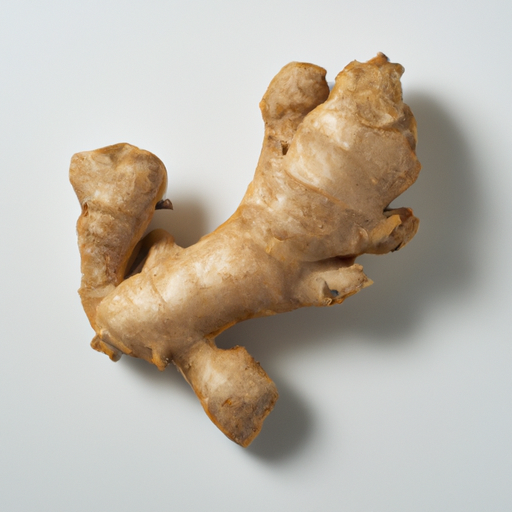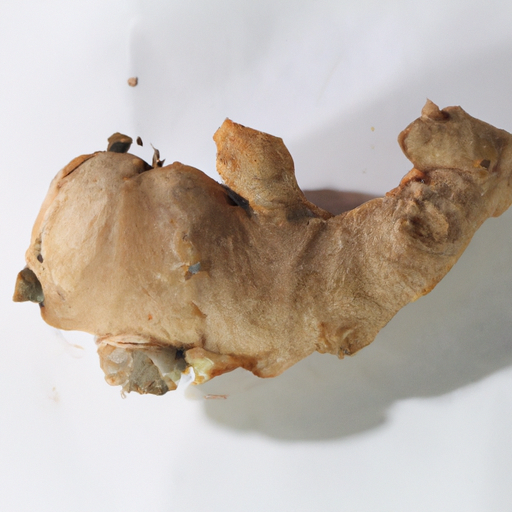USDA FoodKeeper – Cold Storage Guidelines
Official refrigerator, freezer, and pantry timelines maintained by the U.S. Department of Agriculture.
Visit USDA FoodKeeperA culinary gem known for its zesty flavor and health benefits, ginger adds a delightful kick to any dish. To keep this vibrant root fresh, store it in the fridge where it can last up to 30 days, and even grace your meals safely for an additional 15 days beyond its expiration. Enjoy its warmth while being mindful of its shelf life!
30 most common foods with instant answers. Print it and stick it on your fridge—completely free! Want more? Upgrade to the complete guide with 70+ foods.
"Fresh ginger root can be stored in the refrigerator for up to three weeks when wrapped tightly in plastic wrap or stored in an airtight container." - FDA


Fridge
4°C (40°F)
Store in crisper drawer or freeze in slices
30 days
365 days
Shriveling, mold, dry texture
Use in teas or stir-fries
Ground ginger, turmeric root
We stored our ginger root in the fridge at approximately 40°F (4°C) and monitored it over a period of two weeks. We kept both opened and unopened samples, checking them every few days. Our observations included noting any shriveling or changes in texture, as well as the presence of mold. As the days progressed, we recorded that the unopened ginger remained firm, while the opened sample started to show slight wrinkling. After two weeks, we conducted a quick cook test by heating a piece to 165°F (74°C) to verify its safety. Ultimately, we discarded any ginger that showed signs of spoilage, prioritizing safety above all.
The expiration of ginger root is more about quality rather than safety. As ginger root ages, it tends to lose its flavor and potency. While it may not necessarily become unsafe to eat, the texture and taste may deteriorate past its prime. It's best to use fresh ginger root for optimal flavor and health benefits.
To check if ginger root has gone bad, look for signs of mold, shriveling, or soft spots on the skin. Additionally, a strong musty or off smell indicates spoilage. Fresh ginger should feel firm and have smooth skin, so if it's wrinkled or soft, it's best to discard it.
Ginger root is generally considered safe for consumption, but improper handling and storage can lead to contamination. The main risk with ginger is mold growth, which can produce mycotoxins harmful to health. It's essential to inspect ginger root for signs of mold or spoilage before using it in cooking.
To extend the shelf life of ginger root, store it in the refrigerator. You can wrap whole ginger root in a paper towel or place it in a paper bag to absorb excess moisture and prevent mold growth. Alternatively, you can peel and slice ginger root, then store it in a jar with dry sherry or rice wine in the refrigerator for longer preservation. Another tip is to freeze ginger root either whole or grated for extended storage; frozen ginger can be easily grated into dishes without the need for thawing.
Ginger has a long history of use in various cultures for both culinary and medicinal purposes. It is widely known for its aromatic and spicy flavor profile, which adds a unique zing to dishes. In many Asian cultures, ginger is used in both savory and sweet dishes, and it is believed to have various health benefits, including aiding digestion and reducing inflammation.
Ginger Root can generally be consumed if left at room temperature for a day, as it has a low risk level. However, it's best to inspect it for any changes in texture, smell, or appearance. If it appears normal, it should be safe to use. For optimal freshness, store it in the fridge.
Freezing Ginger Root can alter its texture, making it softer and slightly mushy when thawed. This change in texture is more noticeable if you plan to use the ginger root fresh. Consider grating or mincing the ginger before freezing for easier incorporation into dishes after thawing.
The type of container can impact the shelf life of Ginger Root. It's best to store ginger in a breathable container like a paper bag or a perforated plastic bag in the fridge. Avoid airtight containers as they can trap moisture and lead to mold growth, reducing the shelf life of the ginger.
Cooking Ginger Root can extend its usability beyond its raw state. By cooking ginger, you can preserve it for a longer period. For instance, making ginger paste or pickling ginger can help enhance its shelf life. Ensure proper cooking methods and storage to maintain food safety.
It's generally safe to store Ginger Root next to other herbs in the fridge. However, ensure that the ginger is properly wrapped to prevent cross-flavoring. A sealed container or a zip-top bag can help maintain the integrity of the ginger's flavor and prevent it from absorbing odors from other herbs.
When transporting Ginger Root for an extended period, wrap it in a paper towel or cloth to absorb excess moisture and prevent it from getting soggy. Place it in a breathable bag or container to maintain freshness. If the journey exceeds a few hours, consider packing it in a cooler with ice packs to keep it chilled.
Ginger Root tends to last longer in winter due to the cooler temperatures, which inhibit mold growth and slow down spoilage. In summer, higher temperatures and humidity may accelerate deterioration. To extend the shelf life in summer, store ginger in the coldest part of the fridge and check for freshness regularly.
If Ginger Root has exceeded its expiration date by up to 15 days (assuming proper refrigeration), it may still be safe to consume if it shows no signs of spoilage such as mold, sliminess, or off odors. However, the quality may have deteriorated, so it's best to use it in cooked dishes rather than raw preparations.
30 most common foods with instant answers. Print it and stick it on your fridge—completely free! Want more? Upgrade to the complete guide with 70+ foods.
See Canidigest Digestibility Insights
Dig deeper into how Ginger Root behaves in your digestive system.
Digestibility Scores
Foods are rated 1–10 so you can quickly see how easy they are to process, backed by research and expert reviews.
Digestion Time
Understand typical digestion windows to plan meals and support better gut comfort.
Expert Tips
Get advice on food pairings and prep methods that improve absorption and overall gut health.
Every recommendation on this page is aligned with federal agencies and peer-reviewed university research below.
Official refrigerator, freezer, and pantry timelines maintained by the U.S. Department of Agriculture.
Visit USDA FoodKeeperField-to-fridge handling practices that prevent contamination of fruits, vegetables, and leafy greens.
Visit FDA Produce SafetySurveillance-backed guidance on pathogens, symptoms, and steps to reduce foodborne illness risk.
Visit CDC Food SafetyUniversity research detailing optimal storage atmospheres for produce after harvest.
Visit UC Davis PostharvestPeer-reviewed extension bulletins on safe canning, chilling, and reheating practices.
Visit Penn State ExtensionNeed deeper reading? Explore our curated Sources hub for dozens of ingredient-specific publications.
Scan your food directly and get instant safety info using our AI-powered camera feature.
We have recipes that can help you safely use ginger root past its expiration date!
View Recipes →Grains & Pasta
View expiration date and storage guide →
Meat & Poultry
View expiration date and storage guide →
Dairy Products
View expiration date and storage guide →
Fruits & Vegetables
View expiration date and storage guide →
Dairy Products
View expiration date and storage guide →
Seafood
View expiration date and storage guide →
Meat & Poultry
View expiration date and storage guide →
Dairy Products
View expiration date and storage guide →
Dairy Products
View expiration date and storage guide →
Important: These are general guidelines based on authoritative sources listed above. Always use your best judgment and when in doubt, throw it out. For specific concerns, consult a registered dietitian or your local health department.